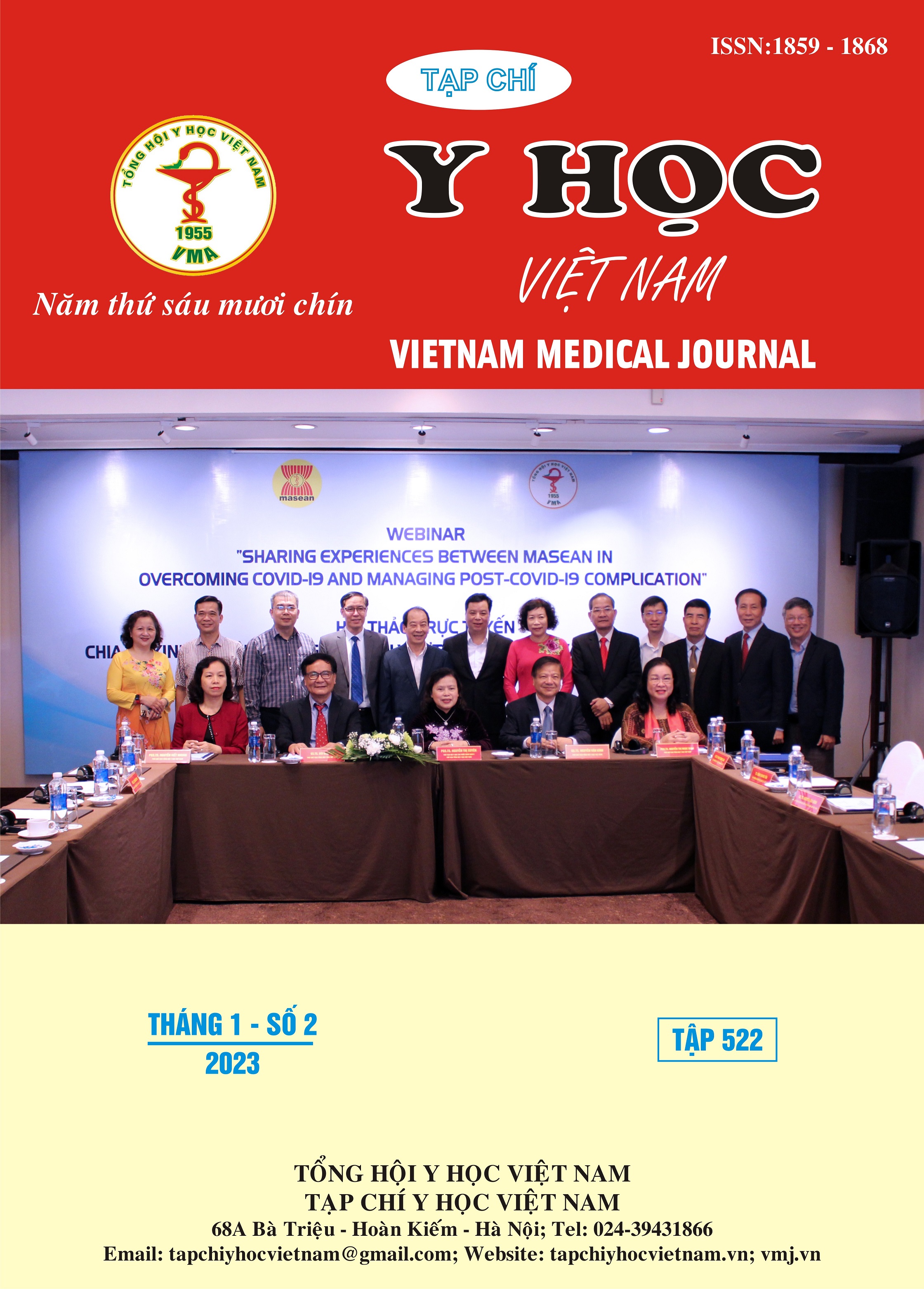CORRELATION BETWEEN INFERIOR VENA CAVA SONOGRAPHIC DIAMETER AND CENTRAL VENOUS PRESSURE IN SEPTIC SHOCK
Main Article Content
Abstract
Background: Assessing fluid responsiveness played a crucial role in hemodynamic support for patients with septic shock. The role of inferior vena cava sonographic diameter and correlation of inferior vena cava with central venous pressure have been increasingly mentioned to guide fluid responsiveness. Method: Prospective observational study at emergency department at University medical center. Fluid challenge was performed according to surviving sepsis campaign 2016. A ≥15% increase in stroke volume after fluid challenge was considered as fluid responsiveness. The CVP catheter was placed, and inferior vena cava sonographic diameters were measured before and after the fluid challenge. Results: 96 septic patients with a mean age of 66,5 ±13,5 were enrolled between 07/2020 and 12/2021, all of the patients were mechanically ventilated. APACHE II score 20,2 ± 2,8, SOFA score 7,1 ± 1,3. 38 patients were considered as fluid responders (39,6%). IVC measurements were statistically significantly correlated with CVP measurements, both inspiratory phase (r = 0,97, p < 0,001) and expiratory phase (r = 0,914, p < 0,001). IVC collapsibility measurements showed a negative correlation with CVP measurements (r = -0,49, p < 0,001). Conclusion: There is a strong correlation between CVP and IVC diameters, and ICV diameters may be used to predict CVP.
Article Details
Keywords
septic shock, fluid responsiveness, inferior vena cava.
References
2. Corl KA, George NR, Romanoff J et al. (2017), “Inferior vena cava collapsibility detects fluid responsiveness among spontaneously breathing critically-ill patients”. J Crit Care 2; 41:130-7.
3. Ahmad Abbsasian, Hamideh Feiz Disfani (2015), “Measurement of central venous pressure using ultrasound in emergency department”. Iran Red Crescent Med J. December;17(12): e19403.
4. Khalil A., Khan A., Hayatd A. (2015), “Correlation of inferior vena cava (IVC) for fluid monitoring in ICU”. Park Armed Forces Med J. 65(2), pp.235-38.
5. Thanakitcharu P., Charoenwut M., Siriwiwatanakul N. (2013), “Inferior vena cava diameter and collapsibility index: a practical non-invasive evaluation of intravascular fluid volume in critically-ill patients”. J Med Assoc Thai. 96(3), pp. 14-22.
6. Schefold J.C., Storm C., Bercker S. (2010), “Inferior vena cava diameter correlates with invasive hemodynamic measures in mechanically ventilated intensive care unit patients with sepsis”. J Emerg Med, 38(5), pp.632-7.
7. Ciozda W., Kedan L. (2016), “The efficacy of sonographic measurement of inferior vena cava diameter as an estimate of central venous pressure”. Cardiovasc Ultrasound, 14(1), p.33.
8. Lê Văn Tuấn, Nguyễn Anh Vũ (2018), “Nghiên cứu đường kính tĩnh mạch chủ dưới trên siêu âm và áp lực tĩnh mạch trung tâm ở bệnh nhân sốc”. Tạp chí Y Dược học – Trường Đại học Y Dược Huế. Tập 8 (số 2), tr.67-72.
9. Worapratya P, Anupat S (2014), “Correlation of caval index, inferior vena cava diameter and central venous pressure in shock patients in the emergency room”. Open Access Emerg Med. 6, pp.57-62
10. Phạm Ngọc Kiểu, Nguyễn Huỳnh Bích Phượng, Hồ Thanh Nhân (2016), “Tương quan giữa đường kính tĩnh mạch chủ dưới đo bằng siêu âm với áp lực tĩnh mạch trung tâm”. Kỷ yếu Hội nghị Khoa học Bệnh viện An Giang. Số tháng 10, tr.1-8
11. Karacabey S., Sanri E., Guneysel O. (2016), “A non-invasive method for assessment of intravascular fluid status: inferior vena cava diameters and collapsibility index”. Pak J Med Sci. 32(4), pp.836-40.


